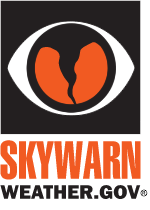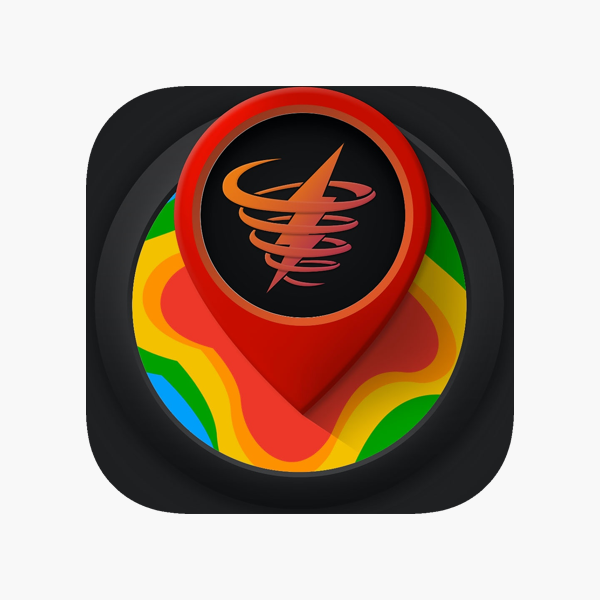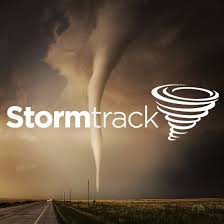Chasing the Storm: How To Become a Storm Chaser

The allure of severe weather, with its raw power and captivating beauty, has drawn countless individuals to the world of storm chasing. The thrill of witnessing nature’s fury firsthand, capturing awe-inspiring images, and contributing to scientific understanding is undeniably enticing. However, venturing into the realm of storm chasing requires more than just a thirst for adventure; it demands meticulous preparation, a deep understanding of meteorology, and a profound respect for the inherent dangers involved.
Building Your Knowledge Base:
Before embarking on your storm chasing journey, a solid foundation in meteorology is crucial. Dive into the world of weather dynamics and familiarize yourself with the following:
- Thunderstorm Formation: Understand the processes that lead to thunderstorm development, including atmospheric instability, lift mechanisms, and moisture sources.
- Severe Weather Ingredients: Learn about the specific conditions that contribute to the formation of tornadoes, hail, damaging winds, and flash flooding.
- Storm Structure Identification: Become adept at recognizing different types of clouds and thunderstorm structures, such as supercells, squall lines, and multicell clusters.
- Radar Interpretation: Develop the ability to analyze radar data, including reflectivity, velocity, and storm relative motion, to track storm development and movement.
- Weather Models: Familiarize yourself with various weather models and their limitations to gain insights into potential storm development and severity.
Essential Resources:
Expand your meteorological knowledge through various resources:

- Online Courses & Tutorials: Numerous online platforms offer comprehensive meteorology courses and tutorials, ranging from basic weather principles to advanced storm analysis techniques.
- Books & Field Guides: Invest in reputable books and field guides that cover storm structure identification, radar interpretation, and severe weather forecasting.
- National Weather Service (NWS) Resources: The NWS website provides a wealth of information on severe weather, including safety tips, spotter training materials, and real-time weather data.
Equipping Yourself for the Chase:
The right equipment can make a significant difference in your storm chasing experience:

- Vehicle: Choose a reliable vehicle with good fuel efficiency, ample storage space for equipment, and sturdy construction to handle rough terrain and potential hail damage.
- GPS Navigation: Invest in a high-quality GPS system with real-time traffic updates and off-road capabilities to navigate unfamiliar areas and avoid hazards.
- Mobile Weather Station: Consider a portable weather station to gather real-time data on temperature, humidity, wind speed, and barometric pressure, providing valuable insights into local atmospheric conditions.
- Communication Equipment: Two-way radios or HAM radios are essential for staying connected with other chasers and monitoring weather updates from the NWS. Ensure you have the appropriate licenses and understand proper radio etiquette.
- Cameras & Videography Equipment: Capture the awe-inspiring beauty of storms with high-quality cameras and video equipment. Invest in sturdy tripods and protective cases to safeguard your gear from the elements.
Safety First and Always:
Storm chasing inherently involves risk, and prioritizing safety is paramount:
- Never Chase Alone: Always chase with a partner or team to ensure mutual support and assistance in case of emergencies.
- Plan Escape Routes: Before embarking on a chase, meticulously plan escape routes and identify potential shelter locations in case of a sudden tornado threat or other hazards.
- Monitor Weather Conditions Closely: Stay vigilant and continuously monitor weather updates from the NWS, radar data, and visual cues to assess storm development and potential threats.
- Avoid Complacency: Even experienced chasers can fall victim to complacency. Never underestimate the power of a storm and be prepared to abandon a chase if conditions deteriorate or become too dangerous.
- Respect Nature’s Power: Always maintain a healthy respect for the destructive forces of severe weather. Avoid placing yourself in unnecessary danger and prioritize your safety over capturing the perfect shot.
Ethical Chasing Practices:
Responsible storm chasing entails adhering to a strict code of ethics:
- Respect Private Property: Never trespass on private land without permission, even in pursuit of a captivating storm structure.
- Avoid Interference: Steer clear of emergency responders and avoid impeding traffic flow. Your presence should not hinder rescue efforts or create additional hazards.
- Share Information Responsibly: Disseminate your observations and reports to the NWS and other chasers accurately and responsibly, avoiding exaggeration or sensationalism.
- Promote Safety Awareness: Advocate for safe chasing practices and educate others about the potential dangers of severe weather.
Building Experience and Skill:
Start your storm chasing journey gradually and methodically:
- Local Storms: Begin by chasing local storms in familiar territory to gain experience and confidence in identifying storm structures, navigating challenging road conditions, and making sound decisions under pressure.
- Storm Chasing Tours: Consider joining organized storm chasing tours led by experienced professionals. These tours provide valuable learning opportunities and allow you to observe best practices firsthand.
- Partnering with Experienced Chasers: Collaborate with seasoned storm chasers to learn from their expertise, gain insights into advanced chasing techniques, and expand your understanding of storm behavior.
Contributing to Science and Public Safety:
Storm chasers play a crucial role in advancing scientific understanding and improving public safety:
Citizen Science: Submit your storm reports and observations to the NWS through platforms like mPING or Spotter Network. This real-time data contributes to improving forecasts and warnings, potentially saving lives.
- Collaboration with Researchers: Partner with meteorological researchers and universities to provide valuable data for storm analysis and modeling efforts, furthering our understanding of severe weather phenomena.
- Educational Outreach: Share your experiences and knowledge with the public through presentations, workshops, or social media platforms. Promote awareness of severe weather preparedness and safety measures.
Beyond the Chase: Community and Advocacy
Storm chasing is not just about the adrenaline rush of witnessing nature’s power; it’s also about building a community and advocating for responsible practices:

- Connect with Other Chasers: Join online forums, attend conferences, and participate in local storm spotter groups to connect with fellow enthusiasts, share experiences, and learn from one another.
- Promote Ethical Chasing: Advocate for responsible chasing practices and encourage others to prioritize safety, ethics, and respect for private property and emergency responders.
- Support Storm Research & Education: Contribute to organizations and initiatives that support storm research, public education, and severe weather preparedness efforts.
Becoming a successful storm chaser is a journey, not a destination. It requires dedication, continuous learning, and a healthy dose of respect for the power of nature. By prioritizing safety, ethics, and education, you can embark on a rewarding and thrilling adventure, chasing the storm while contributing to the greater good. As you embark on this exciting path, remember that the most valuable tools you possess are not just your equipment and knowledge but also your judgment, responsibility, and unwavering respect for the awe-inspiring forces of nature.
